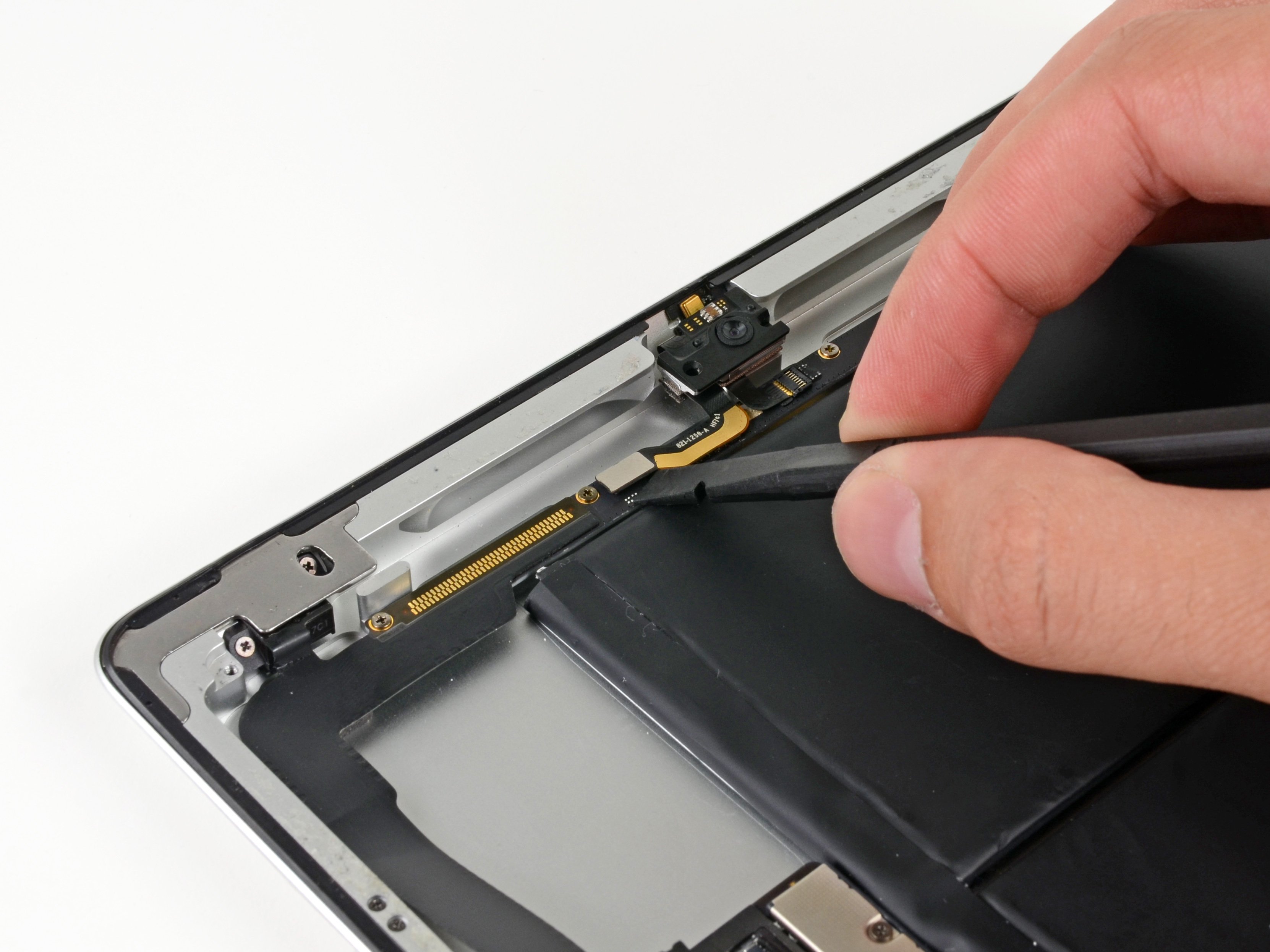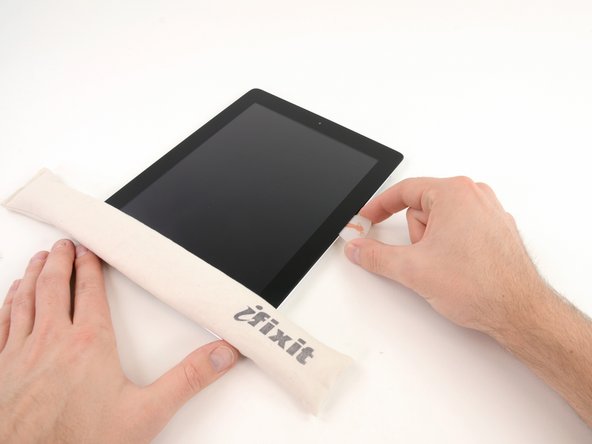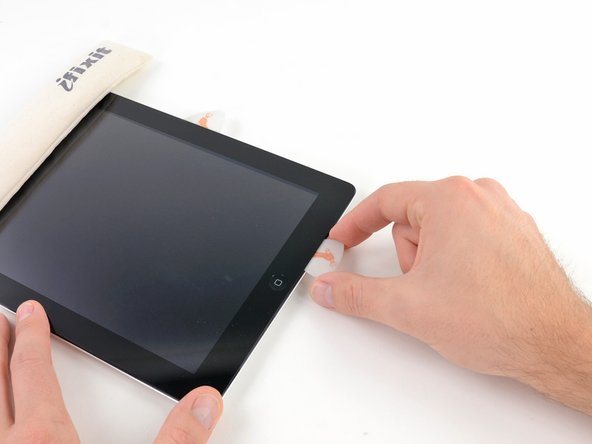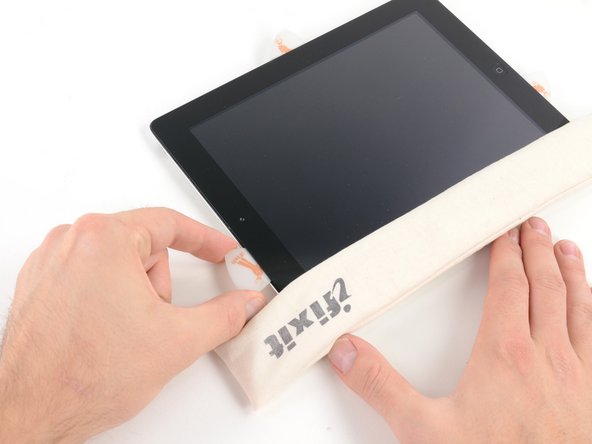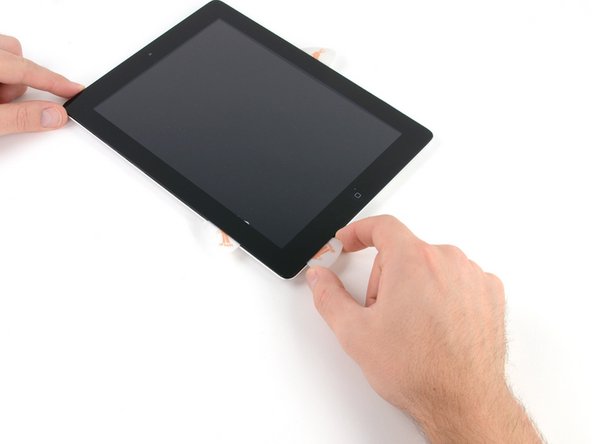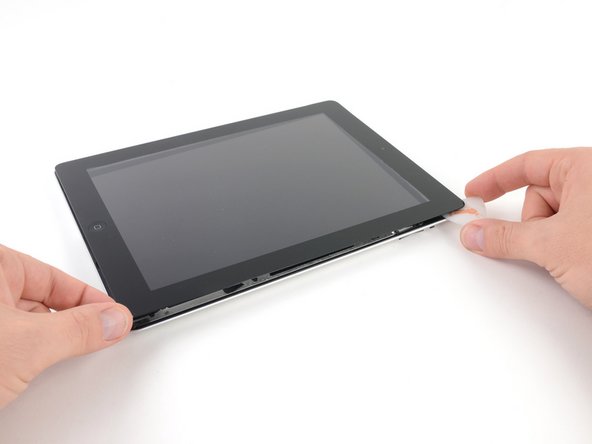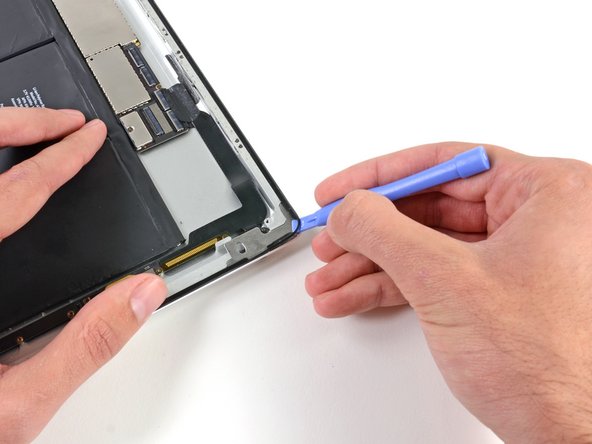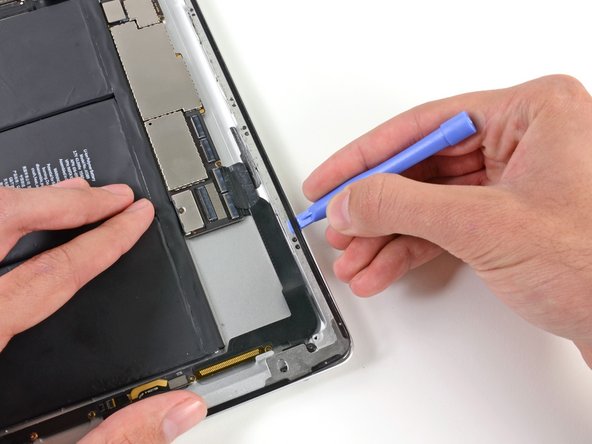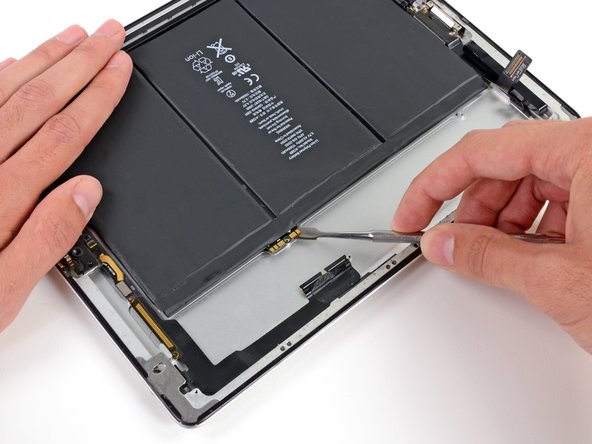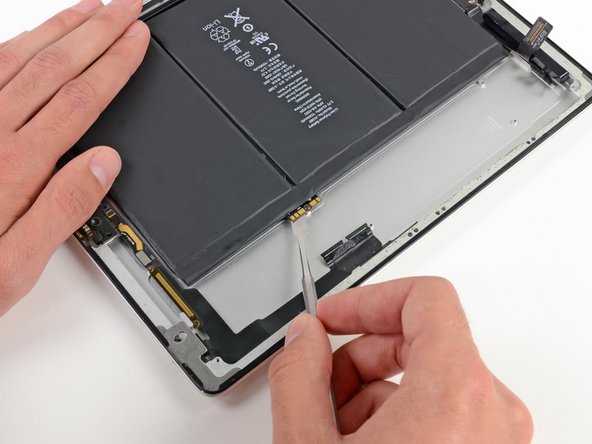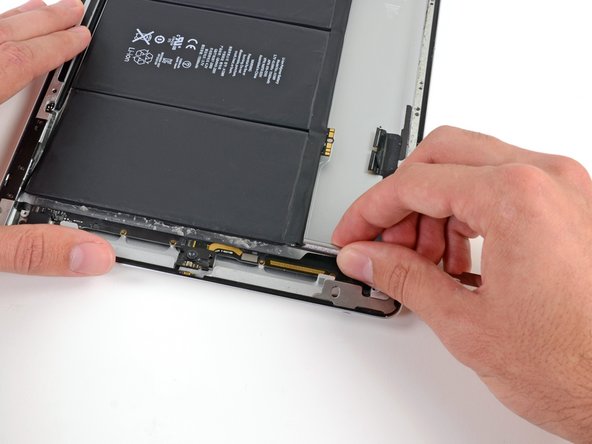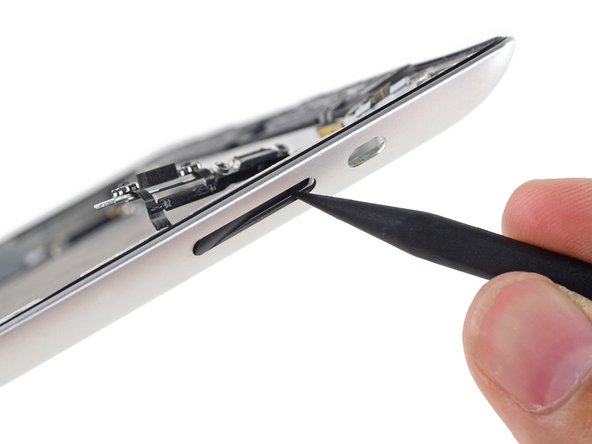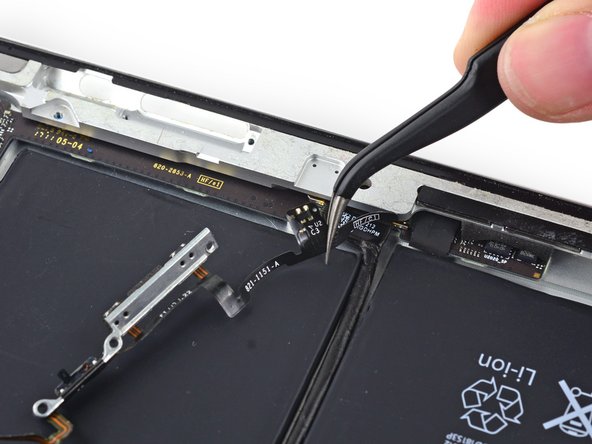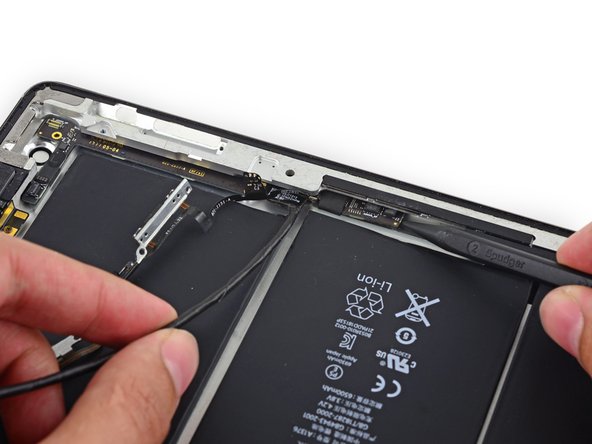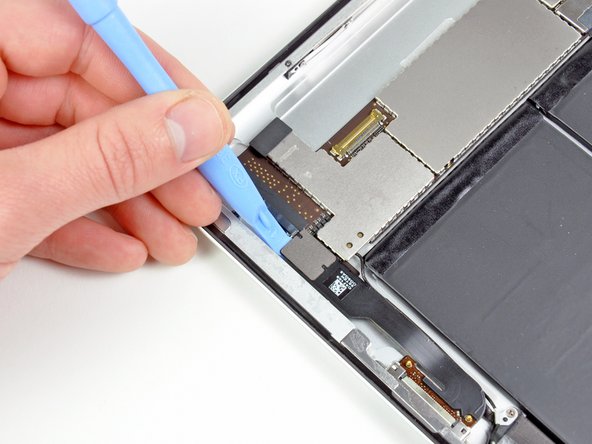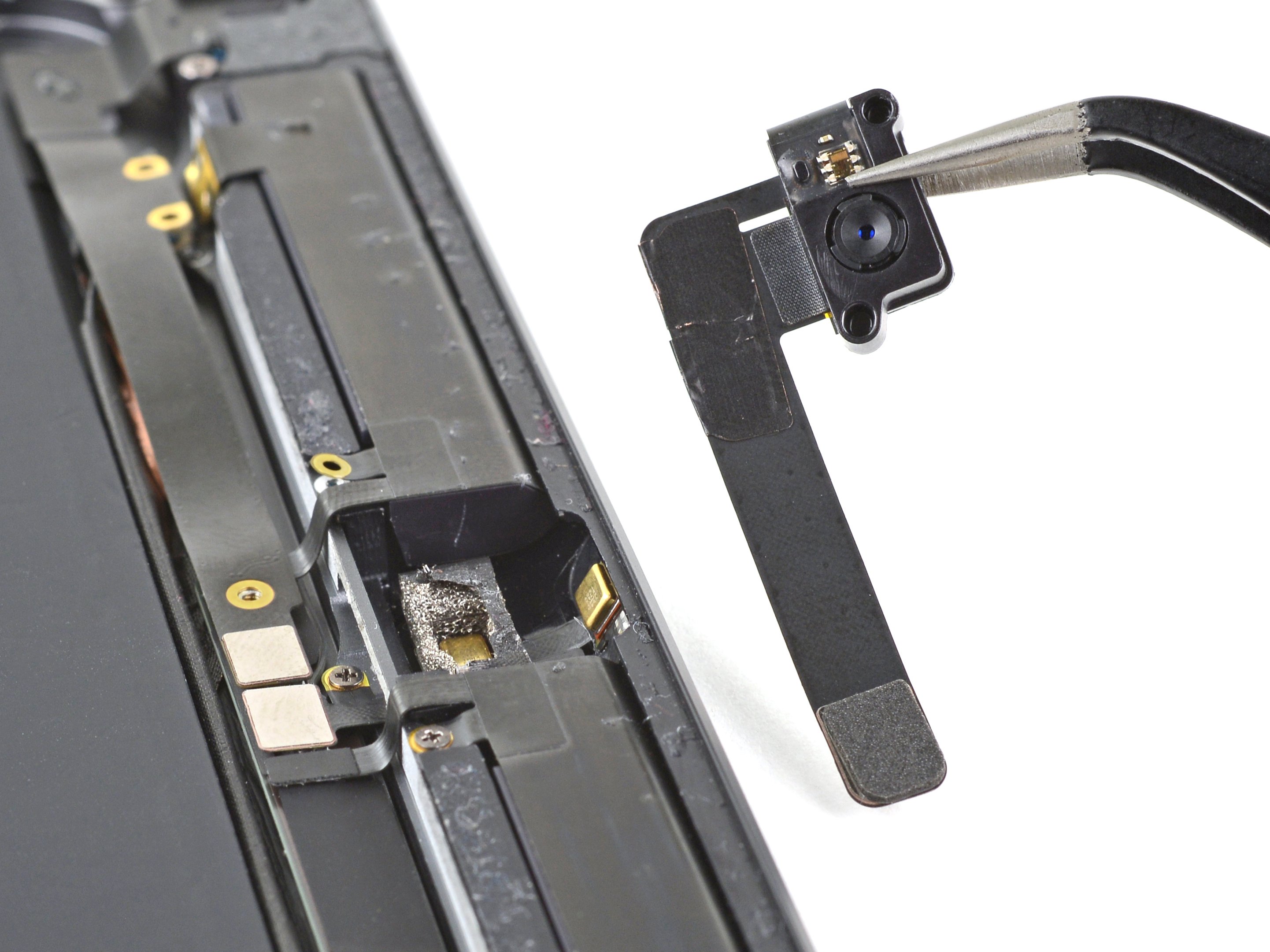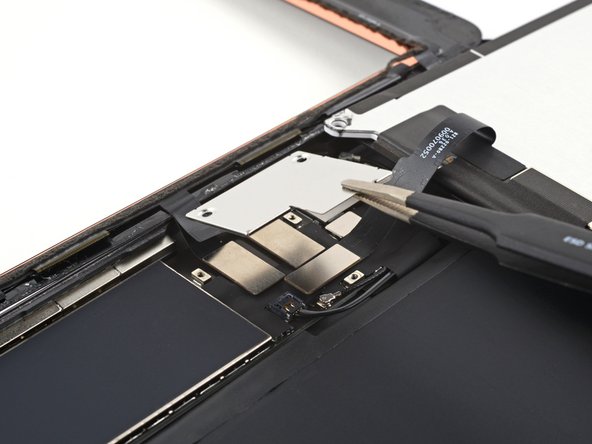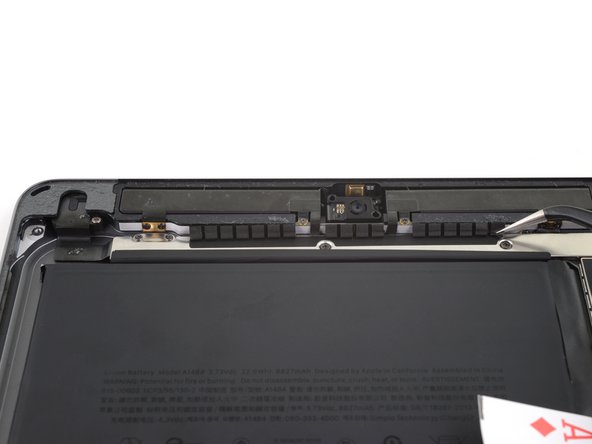Duration: 45 minutes
Steps: 40 Steps
Ready to swap out that front-facing camera? Follow along as we guide you through each step to get it replaced smoothly and quickly.
Step 1
For carousel microwaves: Double-check that the plate spins without a hitch. If your iOpener gets stuck, it might overheat and cause a little burn—so keep it moving!
Give your microwave a quick clean first—any leftover gunk on the bottom might just hitch a ride onto the iOpener, and nobody wants that!
– Pop the iOpener right in the middle of your microwave like a boss.
Tools Used
Step 2
Keep an eye on your iOpener and don’t let it get too hot—overheating might cause it to pop. Never heat it above 100˚C (212˚F).
If your iOpener looks puffed up or swollen, hands off! It’s time to step away.
If the center of the iOpener is still too warm to touch, keep using it while it cools down a bit before reheating. When properly heated, it should stay nice and toasty for about 10 minutes.
Microwave power varies, so you might need to heat the iOpener a bit more or less. It’s ready to go when it’s just a tad too warm to keep your fingers on comfortably.
– Give the iOpener a warm-up in the microwave for thirty seconds. It’s like a cozy spa day for your repair tool!
– As you work through the repair, keep an eye on the iOpener. If it starts to cool down, pop it back in the microwave for another thirty seconds to keep the warmth going. You’ve got this!
Tools Used
Step 3
Heads up! The iOpener gets seriously hot, so handle it with care. Throw on an oven mitt if you want to keep your fingers happy.
– Carefully take the iOpener out of the microwave by grabbing one of its two flat ends—steer clear of the hot center to keep your fingers safe and sound.
Tools Used
Step 4
The iOpener is going to be super toasty, so make sure to grab it only by the end tabs. Stay safe and happy repairing!
If you’re missing a microwave, no worries! Just follow this step to warm up your iOpener in a pot of boiling water. You’ve got this!
– Grab a pot or pan and fill it with enough water to completely cover your iOpener.
– Bring the water to a rolling boil, then switch off the heat.
– Pop your iOpener into the hot water and let it soak for 2-3 minutes, making sure it’s fully underwater.
– Carefully fish out the warmed iOpener using tongs.
– Give it a good dry with a towel to avoid drips.
– And just like that, your iOpener is ready to get to work! If it cools down before you’re done, just repeat the heating process: boil the water, turn off the heat, and soak the iOpener for another 2-3 minutes.
Tools Used
Step 5
Pop on some safety glasses to keep those peepers safe, and handle the LCD screen with care to avoid any unwanted oops moments.
This helps keep those sneaky glass shards in check and adds some muscle when you’re prying and lifting the display.
– If your display glass is cracked, keep the shards in check and avoid any ouch moments by taping over the glass before you start.
– Cover the iPad’s screen with overlapping strips of clear packing tape until the entire front is snugly wrapped.
– Follow the rest of the guide as best you can. Just a heads up: once the glass is broken, it might keep cracking as you work, so you may need to carefully use a metal prying tool to lift out the glass pieces.
Step 6
Heads up! Since you might be handling some broken glass here, it’s a smart move to pop on some safety glasses to keep those sneaky shards at bay.
– Place the iOpener flat along the right edge of the iPad, pressing down so it makes solid contact with the surface.
– Let it chill there for about 90 seconds to warm things up before you try popping open the front panel.
Tools Used
Step 7
Getting the wedged tip of your opening tool in between the glass and plastic might take a bit of elbow grease. Just take your time and be gentle, giving the tool a little wiggle back and forth as needed. You’ve got this!
– Check it out! There’s a tiny little gap in the adhesive ring at the upper right corner of your iPad, about 2.0 inches (~5 cm) from the top. Let’s take advantage of this little flaw!
– Now, line up your tool with the mute button. Gently slide the tip of a plastic opening tool into that gap between the front glass and the plastic bezel. Just get the very tip in there, enough to give that crack a little nudge!
Step 8
– Carefully tuck your tool right where it belongs—slip it between the plastic display bezel and the front panel glass with a smooth touch.
Step 9
– Place the tip of your plastic opening tool between the front glass and the plastic bezel. Now, gently slide a plastic pick into the gap, right alongside the opening tool. It’s like fitting a puzzle piece—just a little nudge and you’re in!
Step 10
– Now, gently remove the plastic opening tool from your iPad, and slide the opening pick a bit deeper under the front glass—aim for about half an inch. Nice and steady!
Step 11
– As you work on loosening the adhesive on the right side of the iPad, don’t forget to give the iOpener another round of heat and place it back on the bottom edge of the iPad.
Tools Used
Step 12
The adhesive is super strong, so you might need to put in some elbow grease. Just take your time and be gentle!
If you spot the tip of the opening pick peeking beneath the front glass, gently wiggle it out just a smidge. Don’t worry, using the pick this deep won’t cause any harm, but it might leave some sticky residue on the LCD. Just a little heads up!
– As the iOpener warms up the bottom edge, let’s get our hands busy by starting to peel away the adhesive from the right side of the iPad.
– Gently slide the opening pick down the edge of the iPad, freeing up that sticky stuff as you glide along.
Tools Used
Step 13
You might have to slide the heated iOpener back onto the right edge of the iPad while you’re loosening the adhesive—depends on how long your iPad has been chilling out while you worked. Keep it cozy to make things easier!
– If your opening pick is feeling a bit clingy in the adhesive, just give it a gentle roll along the side of the iPad. Keep it moving to help break free that sticky bond.
Tools Used
Step 14
– Before you dive into the fun of opening up your iPad, pop a second opening pick under the right edge of the front glass. This little buddy will help keep the adhesive from getting all clingy again!
– Give your iOpener a little warm-up, and then place it at the top edge of the iPad to keep things nice and cozy.
Tools Used
Step 15
Hey there! Just a heads up, the Wi-Fi antenna is snugly secured to the bottom right edge of the rear case of your iPad with screws and a cable. Since the antenna is positioned in a way that’s a bit delicate, be sure to handle it with care to avoid any mishaps that could lead to damage. You’ve got this!
– Heads up: the next steps need some serious care.
– You’ll need to carefully loosen the adhesive holding the antenna to the front panel without messing up the delicate connections at the bottom of the iPad. Take it slow and follow the steps closely.
Step 16
Keep the pick from sliding past the bottom right corner—going further could mess up the Wi-Fi antenna, and nobody wants that!
– Gently slide the opening pick around the bottom right corner of the iPad to loosen the adhesive hiding out there.
Step 17
Carefully slide the opening pick along the bottom right edge of the front panel. Watch out—the Wi-Fi antenna hangs out close to the corner, and if you’re not gentle, you might accidentally cut through it. Stay sharp!
Just give that pick a little wiggle and pull it out slightly—leave about 1/8″ (3 mm) of the tip snug under the front glass. You’re doing great!
– Gently slide the tip of your opening pick along the bottom edge of the iPad to carefully loosen the adhesive holding down the Wi-Fi antenna.
Step 18
– After you’ve passed the Wi-Fi antenna—about 3 inches (75 mm) from the right edge, right near the home button—slide the opening pick all the way back in.
– Gently slide the pick to the right to break free the adhesive holding the Wi-Fi antenna to the front glass.
– The antenna is screwed and connected by a cable at the bottom of the iPad. This step frees it from the front panel so you won’t accidentally damage it when removing the panel.
Step 19
Keep your iOpener chill—heat it for no more than a minute at a time, then let it cool off for at least two minutes before giving it another go.
If the adhesive has cooled down too much along the bottom edge, just give the iOpener another quick heat-up to warm things up where you’re working. It’ll make things stick again!
– Keep on peeling that adhesive at the bottom of the iPad! Gently pull the opening pick out just enough to navigate around the home button. Once you’re past that button, slide it back in to about 1/2 inch (10 mm) deep. You’ve got this!
Tools Used
Step 20
For iPad 4 models, slide your pick in no deeper than 1/2 inch (10 mm) right here to keep that home button ribbon cable safe and sound.
– Keep peeling that adhesive all the way across the bottom edge of the iPad. You’re doing great!
– Pop in the opening pick to keep the front glass lifted near the home button. You’ve got this!
Step 21
– Pop the iOpener into the microwave for a quick reheat and place it on the left edge of your iPad. This will start softening the adhesive in that spot, making it easier to work with.
Tools Used
Step 22
If the adhesive has gotten a bit too chill, just swap out the iOpener along the top edge and keep on going. If your iOpener is feeling a little under the weather, give it a quick reheat to bring it back to life.
– Gently glide the opening pick along the top edge of your iPad, giving it a little tug to navigate around that front-facing camera bracket.
– Keep in mind, the adhesive here is pretty tenacious, so you might need to apply a bit of muscle. Take your time, and be careful not to slip and hurt yourself or your iPad.
– If the opening pick starts to get stuck in that sticky stuff, try ‘rolling’ the pick just like you saw in step 9.
Tools Used
Step 23
If your adhesive is feeling cozy and warm, go ahead and take the iOpener off the iPad for a bit of ease. But if it’s still hanging on tight, give that iOpener another round in the heat and place it on the left edge while you get to work.
– Keep peeling away the adhesive along the top edge of the iPad, and gently maneuver the opening pick around the top left corner.
Tools Used
Step 24
Heads up! The digitizer cable hangs out about 2″ (50 mm) from the bottom edge of your iPad. When sliding your pick, pause once you hit roughly 2.25″ (60 mm) from the bottom to avoid any surprises.
– Gently slide your opening pick along the left edge of the iPad, easing through the adhesive bit by bit. It’s a slim layer here because of the digitizer running along the side, so keep your pick shallow—no more than 10 mm (about 1/2 inch)—to avoid any oops moments with the digitizer.
Step 25
The digitizer cable is pretty close to the bottom of the iPad—about 1″ (25 mm) away. Take your time and work with care, so you don’t accidentally cut this cable!
– With the opening pick still tucked under the bottom edge of the iPad, gently peel back the adhesive along the bottom left corner. It’s a bit like unraveling a mystery, so take your time and be careful. You got this!
Step 26
If some of the adhesive around the iPad’s edges has decided to stick back down, no worries! Just grab a pick and gently slide it under the part where the front glass is still clinging on, then carefully ‘cut’ through that adhesive. Easy peasy!
– Grab an opening pick and gently lift up the bottom right corner of your iPad, then use your fingers to hold it in place. You’ve got this!
Step 27
Watch out for any sticky adhesive that might still be lurking around! Grab an opening pick to slice through any stubborn adhesive that’s keeping the front panel snug as a bug.
– Grab your iPad by the top and bottom right corners and gently twist the front glass away from the device. It’s like a little dance move!
– When putting things back together, don’t forget to use a microfiber cloth and some compressed air to give that LCD a nice clean-up before you seal the glass back on. Nobody likes a dusty screen!
Step 28
– Grab your trusty Phillips #00 screwdriver and unscrew those four 2 mm screws holding the LCD in place. They’re the ones keeping your screen snug in its aluminum home, so give them a gentle twist and set them aside.
Step 29
Take it easy while moving the LCD—its ribbon cable is super delicate and could snap if you’re too rough or bend it too far.
– Grab your trusty plastic opening tool or spudger and gently lift the right edge of the LCD out of the iPad. You’re doing great!
– Now, swing that LCD around on its left edge and let it rest on top of the front panel. Nice and easy!
Tools Used
Step 30
– Grab the tip of your spudger and gently peel away the tape that’s hiding the LCD ribbon cable connector. Nice and easy – you’re doing great!
Tools Used
Step 31
– Gently lift the retaining flap on the LCD ribbon cable ZIF connector, giving it a friendly nudge.
– With a little finesse—either with your fingers or a trusty pair of tweezers—carefully wiggle the LCD ribbon cable out of its cozy spot on the logic board.
Step 32
– Gently lift the LCD off the front panel without getting your fingers on the screen. You’ve got this!
Step 33
If needed, gently lift the tape holding the digitizer ribbon cable in place on the logic board. No stress, just a little careful peeling to set it free!
– Lift the retaining flap on both of the digitizer ribbon cable ZIF connectors with care.
Step 34
– Grab that flat end of your trusty spudger and gently work it under the digitizer ribbon cable to break free the adhesive that’s holding it down. You’ve got this!
– Now, with a steady hand, carefully slide the digitizer ribbon cable straight out of its sockets on the logic board. Easy does it!
Tools Used
Step 35
– Gently peel back the digitizer ribbon cable, then use the flat end of your spudger to carefully loosen the adhesive holding it to the back aluminum case.
Tools Used
Step 36
– With a gentle touch, wiggle the digitizer ribbon cable out of its cozy spot in the aluminum frame.
– Carefully lift the front panel off of the iPad and set it aside.
Step 37
– Gently lift and peel away the adhesive tape covering the headphone jack assembly.
Step 38
– Gently wedge the flat end of your spudger under the front-facing camera to pop it off its socket on the headphone jack assembly.
– Keep the spudger in place and slide it to the right to peel back the adhesive securing the camera’s ribbon cable.
Tools Used
Step 39
– Gently use the flat end of a spudger to pop the camera ribbon cable out of its socket inside the plastic antenna housing.
Tools Used
Step 40
– Now it’s time to put your device back together! Just retrace your steps in reverse, and you’ll be back in action in no time. But hey, if you hit a snag or need a helping hand, feel free to schedule a repair!
Success!
